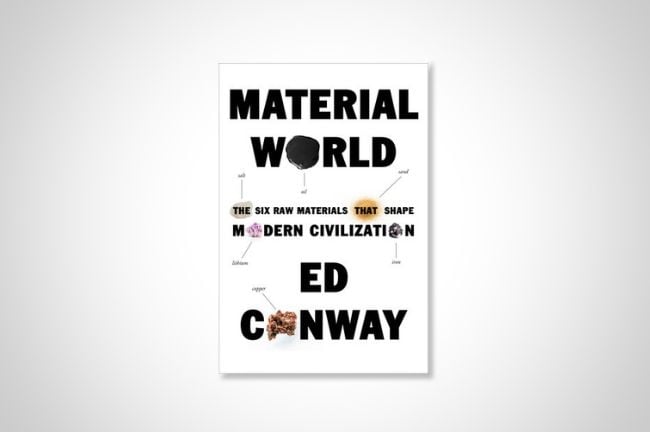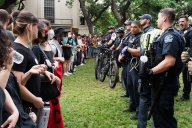You have /5 articles left.
Sign up for a free account or log in.

Penguin Random House
Material World: The Six Raw Materials That Shape Modern Civilization by Ed Conway
Published in November 2023
What is higher education made of? Most of us in academia would answer that question by combining the words “students,” “faculty,” “staff,” “ideas,” “traditions” and “knowledge.”
Few academics are likely to respond to the query of what higher education is made of by answering “Sand, salt, iron, copper, oil and lithium.”
After reading Ed Conway’s Material World (one of the finest nonfiction books I’ve read in a long while), my thinking has evolved about the foundations on which higher education is built. Material World brilliantly illuminates the physical underpinnings of our social and economic lives, including (I’d now argue) academia.
Understanding the material basis of our ethereal academic occupations and increasingly digitally mediated institutions is challenging. The physical world intrudes upon our awareness—mainly when things go wrong.
We don’t have to think much about the fiber-optic cables that transmit our internet packets unless the network goes down, or the copper wires that deliver the electricity from the grid or the campus power plant unless the lights go off.
In Material World, Conway traces the six raw materials to their sources (enormous mines, deep wells, vast pits) and then across the global journey that turns commodities into industrial and consumer goods.
Threaded through the origin stories and trajectories of the six commodities explored in the book are the themes of complexity, transformation and risk.
Complexity is built into our material world, as our essential raw materials are highly processed and embedded in globe-spanning supply chains. The number of steps between the mining of sand and the production of silicon chips is mind-boggling. The path from unprocessed lithium to the key ingredient of the batteries that power electric cars involves multiple countries and numerous production processes.
Gaining a complete understanding of how the things we depend on are made, from consumer goods we buy to the built environment we occupy, will never be entirely possible. The material world is too complex to know everything about the physical building blocks of our economy and society.
The theme of transformation runs through Material World in two senses. The first is that each of the commodities the book profiles must be transformed into something else to be useful. Oil is transformed into the petroleum products we know well (gas for our cars, heating oil for our homes) and uncountable other products. Starting with just the A’s, some of the products that depend on oil include “adhesives, air mattresses, ammonia, antifreeze, antihistamines, antiseptics and artificial limbs.”
The second transformation that Material World focuses on is the shifting from fossil fuels to renewable energy. This is a change in which we stop burning the molecules we extract from the ground for the energy that powers our civilization and start transforming them.
Material World is a helpful reminder that transitioning to renewable energy is a material-intensive process. To give one example from the book, the resources required to replace a gas turbine with wind power would include “nearly 30,000 tons of iron and almost 50,000 tons of concrete, along with 900 tons of plastics and fiberglass for the blades, and 540 tons of copper.”
Universities should lead the way in decarbonizing energy usage and transitioning to renewable energy. The long time horizons on which higher education operates make us ideal for managing the long-term ROI of transitioning from burning fossil fuels for our heat and electricity to geothermal, solar, wind and batteries. As higher education leads the energy transition, we should remember that renewable energy is built on a foundation of sand, salt, iron, copper, oil and lithium—all of which must be extracted, processed and transformed.
The last theme of Material World that stood out for me is Conway’s discussion of risk. He identified risks of supply chain interruptions and the concentrated ownership of minerals and production capacities in nondemocratic nations. China is the most significant risk, as the world depends on that country for most of its battery production.
For higher education, our risk is not giving the material world enough attention in our research and teaching. Are we training enough students to lead the energy transition? Are we doing enough to infuse energy studies across our liberal arts and preprofessional curricula? Is higher education at risk of creating a generation of graduates educated to navigate the ethereal world with little understanding of the material basis for society?
Fantastic book.
What are you reading?








